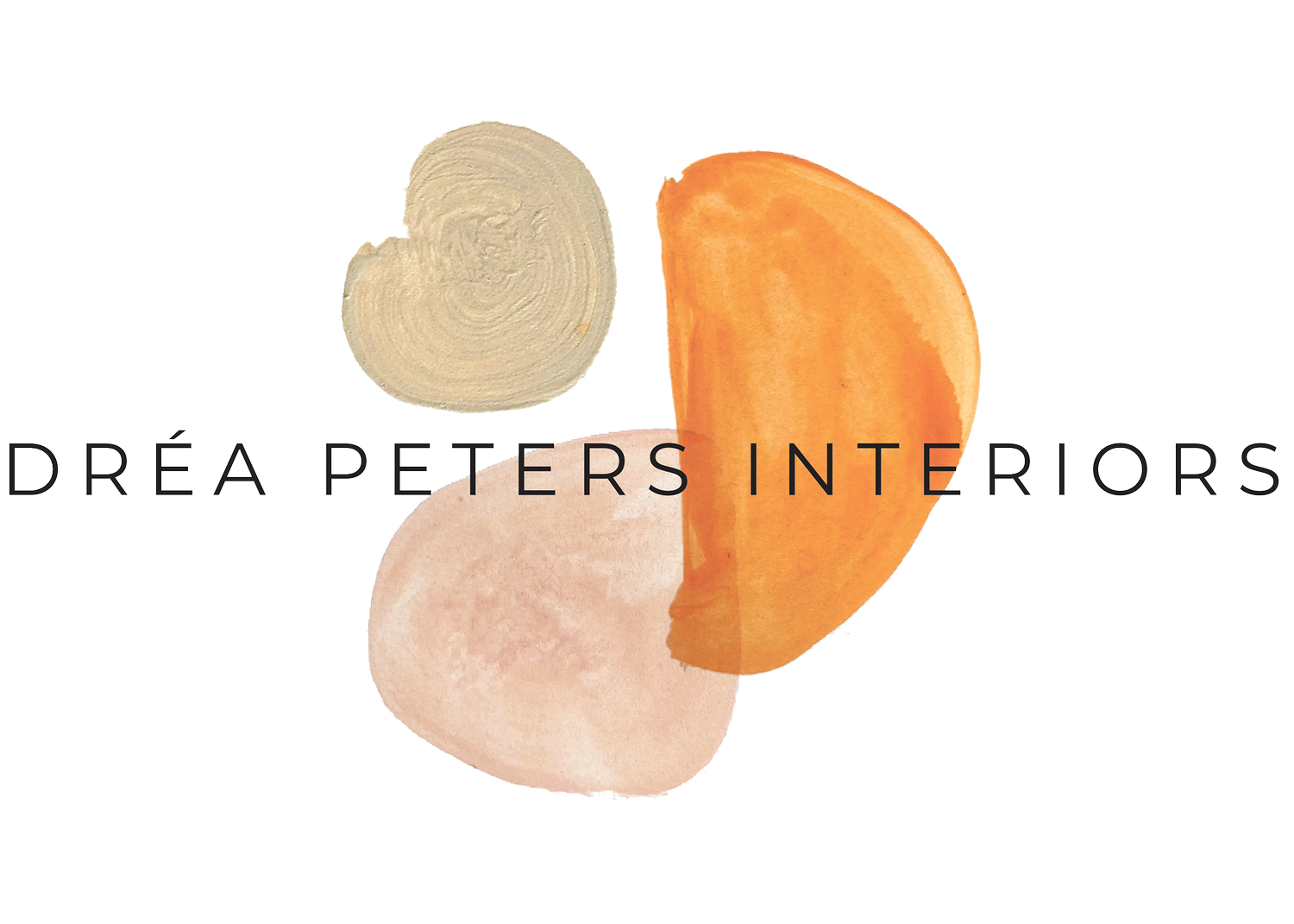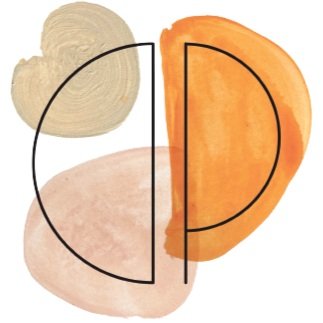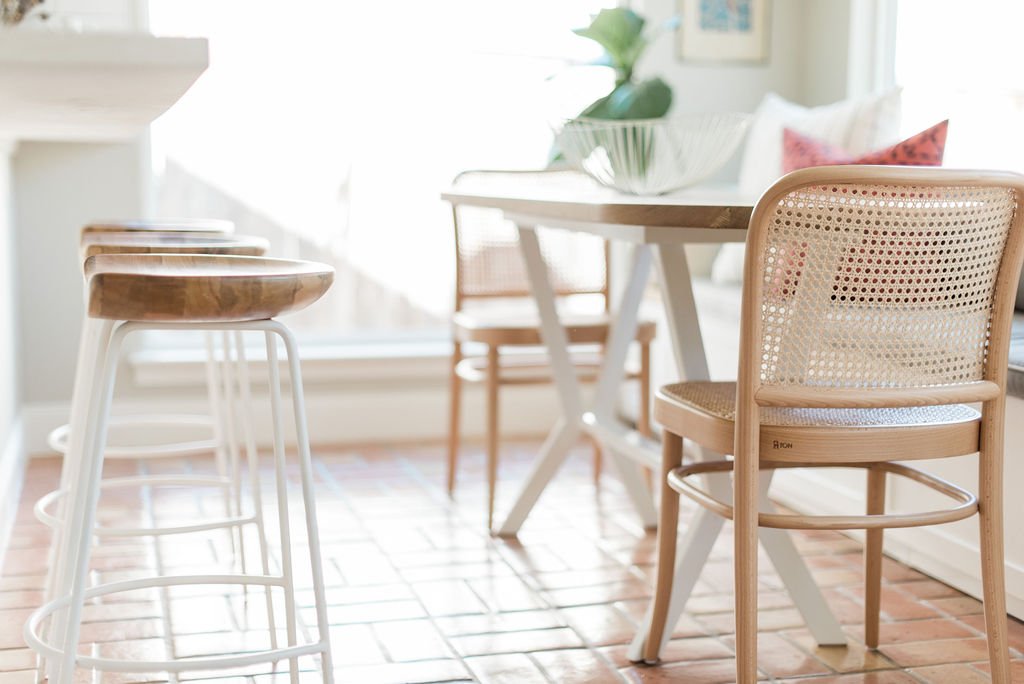Interior Design Dictionary
SPEAK W YOUR INTERIOR DESIGNER
▫️▫️
Often when an interior design project gets going, lots of foreign terms can get thrown around.
This page breaks down a number of interior design phrases, acronyms + jargon that you may find helpful.
Upholstery/ Fabric Terms
COM: Customer's Own Material - This is the acronym used when you are sending fabric that you purchased to the upholsterer or workroom instead of using fabric the workroom provides. I usually write COM followed by detailed fabric information for the upholsterer. Variation is COL: Customer's Own Leather.
What's the price for the sofa COM?
CFA: Cutting for Approval - When you order fabric you should always get a CFA. This is an actual piece of the fabric roll that you'll be getting your fabric from. Since dye lots (see below) can differ you want to make sure that the roll you'll get your material from is what you want.
Did the CFA arrive? Did you approve the CFA?
Dye Lot: Fabric and wallpaper are done in batches and colors can vary. If you're ordering fabric or wallpaper you'll want to get them all from the same dye lot, or at least get CFA to make sure they all match. This can sometimes be a problem when you order material and then have to order more and there is none left from your dye lot. Measure twice!
What do you mean that you only have 2 yards of that dye lot left?!
Welt: The finishing rim around upholstery. Self-welt is done in the same material as upholstery. You can also have a double welt. Or a contrast welt (done in different material as upholstery). May also be called cord/cording/pipe/piping.
I need a single self-welt on that tuxedo sofa.
Flange: Another type of finishing trim around the edges of upholstery is flange. Instead of a round cord, flange is flat material. Here is an image of a sofa with flange detail (can be contrast or the same material). And a double flange. Don't like fussy details, try Knife Edge which is weltless and has a flat seam.
I just can't get into flange on sofas, it feels so flabby.
Off-the-Bolt & Railroad (RR): This one is hard to describe without using visuals - so check this out. Essentially, unless you specify otherwise upholsterers will pull the fabric off the bolt and run it vertically on the furniture. When you ask for it to be railroaded, the fabric is pulled horizontally over the furniture. You'll need this if you want the pattern on the fabric to run a different direction than Off-the-Bolt, especially if you have vertical stripes that you want horizontal.
I'd like the fabric to be railroaded so that the stripes run horizontally.
Cut/ting fee: Often if you are only ordering a couple of yards of fabric there is a cutting fee.
Orders under 3 yards have a cut fee of $75.
Abrasion Tests/ Double rubs: The durability of fabric is measured by abrasion tests and double rubs, a double rub is the back & forth motion on these tests. The higher the double rubs the higher the durability. Sheer curtain fabric is going to have low double rubs, but since it'll be used on curtains, not a problem. You wouldn't want to use that same sheer fabric on upholstery because it wouldn't stand up to the wear of use. Wyzenbeek uses the double-rub method and Martindale uses a figure-8 motion to test durability. You may see one of the other written on the fabric samples.
How many double rubs?
This is a nice page for different upholstery elements.
Punch List: The final to-do list before a job/project is complete. This is all the last-minute final things like getting a rug pad or paint touch-ups or buying the obscure light bulbs for the lamp.
We're about 3 weeks away from wrapping up the punch list.
Sidemark or S/M or SM: Job Name - At Dréa Peters Interiors, we use a 4-letter code for my client projects - LKBP or DRSM. Sometimes the sidemark is the client's last name or the project street name. If you are doing a lot of ordering, it helps the vendors call and quickly identify the order by sidemark - the entry tile for JBE is in (for example).
What's the sidemark for that order?
SHIPPING RELATED
Leadtime: What's the leadtime? is a common phrase interior designers say. Leadtime is just the time between ordering and shipping or sometimes delivery. A lot of custom furniture has a 12-16 week leadtime. I also ask contractors this when I want to know when they can start the project - What's your current leadtime?
The leadtime for that sofa is 16 weeks, so we need to order now to make it to your house before the holidays.
Backorder: When something is out of stock. Be careful when ordering things on backorder. They may sell out the first run and you'll have to wait longer. In my experience, things on backorder often take longer to arrive than what is originally quoted.
That chair is backordered, so it's going to add another 4 weeks to the leadtime.
Freight/Delivery/Installation/Shipping Fee: You need to watch for the transportation terms. There can be multiple fees attached to a single item and it can be confusing to the client. Shipping is generally a catch-all term and usually includes these various fees. Freight generally refers to the charge to get it from the vendor to a receiving warehouse. Then you could have a delivery charge to get it from the warehouse to the client's home. Installation charge will be for assembly and putting the piece in place in the client's home.
We're going to be shipping the sofa to the warehouse for a freight charge of $400, then the delivery guys will bring it to your house and install it with the rest of your furnishings in May.
Drop Ship: Delivery direct to a client's home. Some vendors only deliver to a location with a loading dock and can't drop ship. Sometimes there is an additional fee to drop ship. When delivering to a client's house, you also need to know if the service includes White Glove Delivery - which is installation of the piece - bringing it into the client's home and setting it up, and removing packaging materials. Or if it only includes Curbside Delivery - dropping it at the front door.
That piece can't be drop shipped, it needs to go to a receiving warehouse.
ESD: Estimated Ship Date / Estimated Delivery Date - This is the date that you'll get from the vendor or shipping company to let you know when they expect to ship or deliver the piece.
Right now we have an ESD of May 16, but with the weather, we've been having that may be a little later.
Construction Terms
FF&E: Furniture, Fixtures, & Equipment. This term is to call out things outside of the building portion - furniture, accessories, artwork, lighting, window coverings, and rugs.
We need to start thinking about FF&E to get this project delivered on time.
Change order: The official document that a change in scope has been made and agreed to by the parties involved (architect/contractor/designer/client). If it is outside your contract a change order is a smart move. Change orders protect all parties from disputes down the road.
The client wants to add some fancy millwork to the Den, so we need to issue a change order for the schedule and budget so they know both are increasing.
NTS - Not to scale. If your drawings are not to scale, write NTS on them so that there is no confusion.
You can't use your architectural scale ruler out to take the measurements from this drawing because it's NTS.
OC / On Center - Measurement taken from the center point rather than an edge.
Is that light fixture installed at 54" on center




